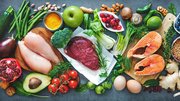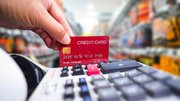Commentary
2 food cost myths hamstringing convenience foodservice recovery
Most convenience services operators are quick to attribute high food cost to price changes, and then there is the Internet doling out wrong information, like the average food cost should be 34%. But these two ideas are myths. If you want to lower food cost, you need to move past these myths and embrace food cost saving ideas.

June 21, 2021 by David Scott Peters
(Editor's note: An earlier version of this article ran in Food Truck Operator, a Vending Times sister publication.)
Food costs have been rising on a weekly basis for darn near two decades now. Most convenience services operators are quick to attribute their high food cost to these price changes.
On top of that, the echo chamber of the Internet keeps compounding the problem, feeding you bad information like the average food cost should be 34% or TV shows touting a three times markup for food sales.
But these two ideas are myths, especially important for the commercial foodservice industry. If you want to lower your food cost, let's review why moving past these two food cost myths will help you focus on food cost saving ideas for independent operators.
2 fallacies
Fallacy number one: The price I'm paying for my products is the real problem. A lot of operators want to blame their high food cost on their distributors. That's what I always thought when I was the operations manager of a multi-unit brew pub.
Fallacy number two: You're supposed to operate based on an industry average food cost target. The problem is what is average, and does it really apply to your operation?
Let's start with fallacy number one: it really wasn't my suppliers. It was how we handled our product.
One of the things I've learned coaching independent foodservice operators since 2003 is that most food operations run seven to nine points above their ideal food cost.
What is ideal food cost? Ideal food cost is if everybody ran perfectly, portions went out perfectly, there was no waste, no theft, no spoilage. If you ran a perfect operation, based on what your customers order, you would hit your ideal food cost. But the average is just that — a number somewhere in the middle of all food operations combined. If you sell pizza, maybe you have a 24% ideal food cost. An operation focusing on burgers could have a 35% ideal food cost.
Just using those two numbers as an example, imagine most of your peers/competitors are running seven to nine points above that because they're making mistakes in the purchasing, prep or costing. It's not the 15 cents more a pound of cheese that your purveyor just hit you with because it's a commodity product.
So how do you deal with this? How do you stop making those mistakes?
Key tools to consider
Here is a short list of items you can put in place to help you gain some savings on food cost. If you're the sole operator and you're not sharing shifts with another team, these tools can really open your eyes to the mistakes you're making.
• Key item tracker: Tracks five to 15 items on a shift-by-shift basis to make sure they're not stolen. This includes high protein items, high movers, things that are important to you, things you don't want stolen.
• Waste tracker: Tracks what you're throwing away such as that half a case of tomatoes every Thursday because you're over ordering on Monday. You'll find problems like somebody isn't rotating product, or they're overcooking often and throwing product away. Once you root out these reasons for waste, you can fix those problems today.
• Checkbook guardian: Give up ordering without giving up your checkbook. Set a budget and don't go over budget without having a good reason, such as an expected spike in sales from a special event. Plus, if you have managers, and they need to go over budget, they need to come to you with what the problems are and what they plan to do to fix it.
• Portion controls: Make sure every dish goes out the same every single time. Not only do portion controls help you control your costs, but they increase your sales because you give your customers the same experience every single time.
• Line checklists: Make sure everything is in the right place, that you have the right portion controls so everything tastes right.
• Time-temp checklists: Check the temperatures of your coolers on a regular basis so you're not throwing away product because it's going bad.
In search of the right food cost
Now, the second reason food cost is so high, the biggest fallacy, is the wrong assumption that food cost can or should be at 34%. To understand why that average is probably not your operation's target food cost, you have to understand prime cost, budgets, ideal food cost and menu engineering.
Prime cost is total cost of goods sold, plus total labor cost, including taxes, benefits and insurance. I teach foodservice operators to shoot for a 55% prime cost if they do $850,000 in gross sales a year or 60% if they have sales lower than that — not the national average of 65% — and that you can run a higher food cost, lower labor costs, or a higher labor cost with a lower food cost. It doesn't matter how you get to those 55 points. A foodservice industry average is a terrible target for convenience foodservice operators because the budgeting factors are so different.
Using a budget allows you to set your plan in progress for how you're going to lower your food cost to where it needs to be for you to make money. For example, you can put the key item tracker, waste tracker and the checkbook guardian in place to reduce your food cost by three points right out of the gate. You need to hold yourself accountable to using these systems, even when you think you know it all in your head.
Recipe costing cards are the second most important system for a food operation, next to the budget, but it may take you a few months to do recipe cards so you can figure out what your ideal food cost is based on no waste, no theft and no spoilage.
Once you have those, though, you can use menu engineering techniques and consider raising prices, changing products on some items, reducing portions, adding new items, removing items, etc. The important thing is you'll be making these decisions based on real data — not your gut. Any of these things can be part of the work to lower your food cost.
Now that we've busted these two harmful myths, you can start your journey to lowering your food cost. You can create a plan and use this short list of systems to be on your way to a more profitable convenience foodservice operation.
About David Scott Peters
Known as THE expert in the restaurant industry, he uses a no-BS style to teach and motivate restaurant owners to take control of their businesses and finally realize their full potential. Thousands of restaurants and bars have used his formula to transform their businesses. To learn more about David Scott Peters and his formula, visit www.davidscottpeters.com.







